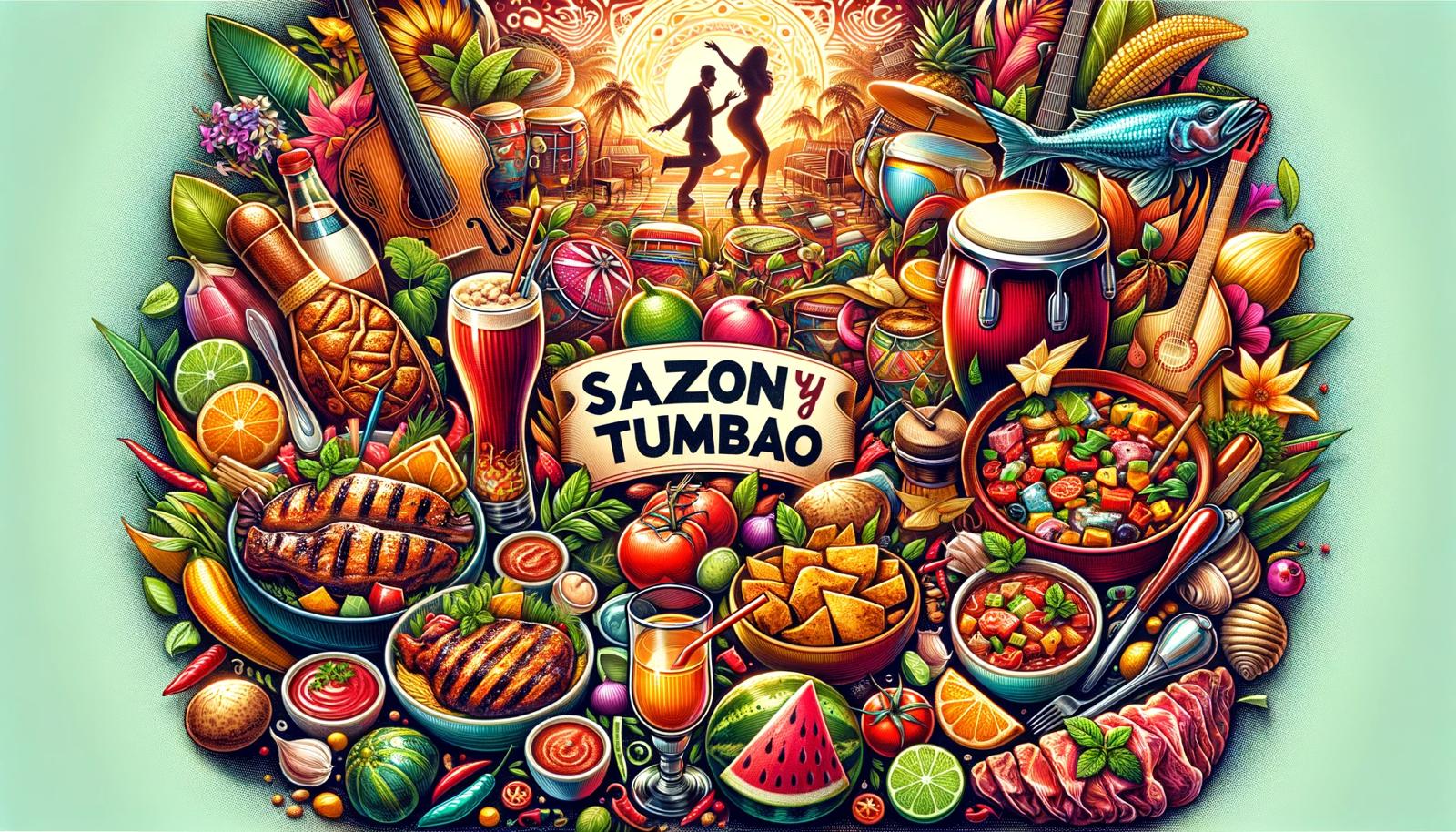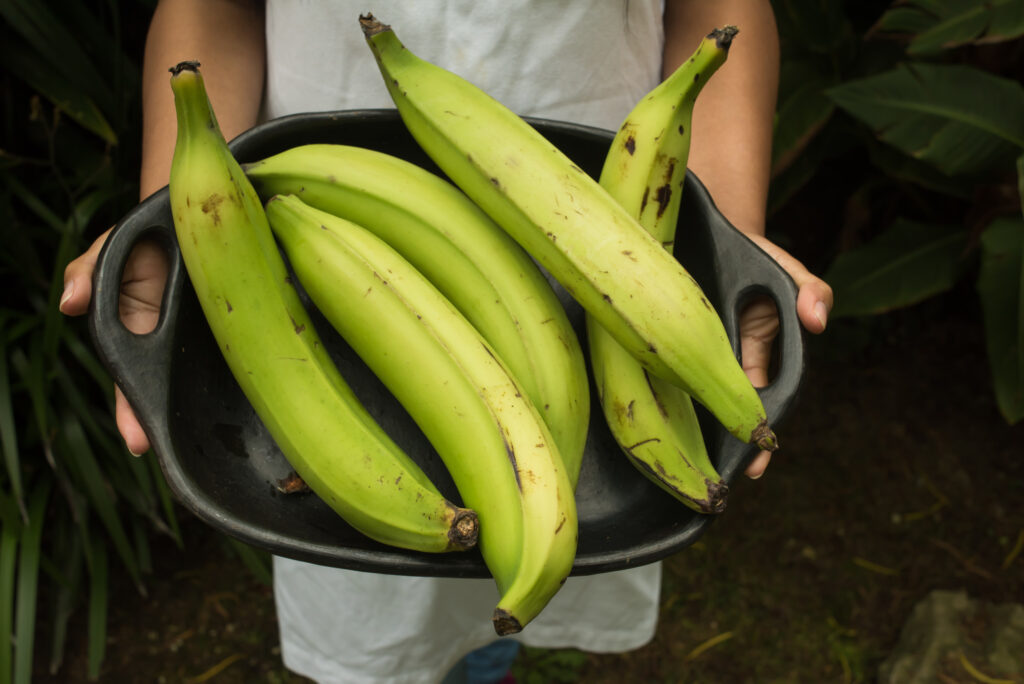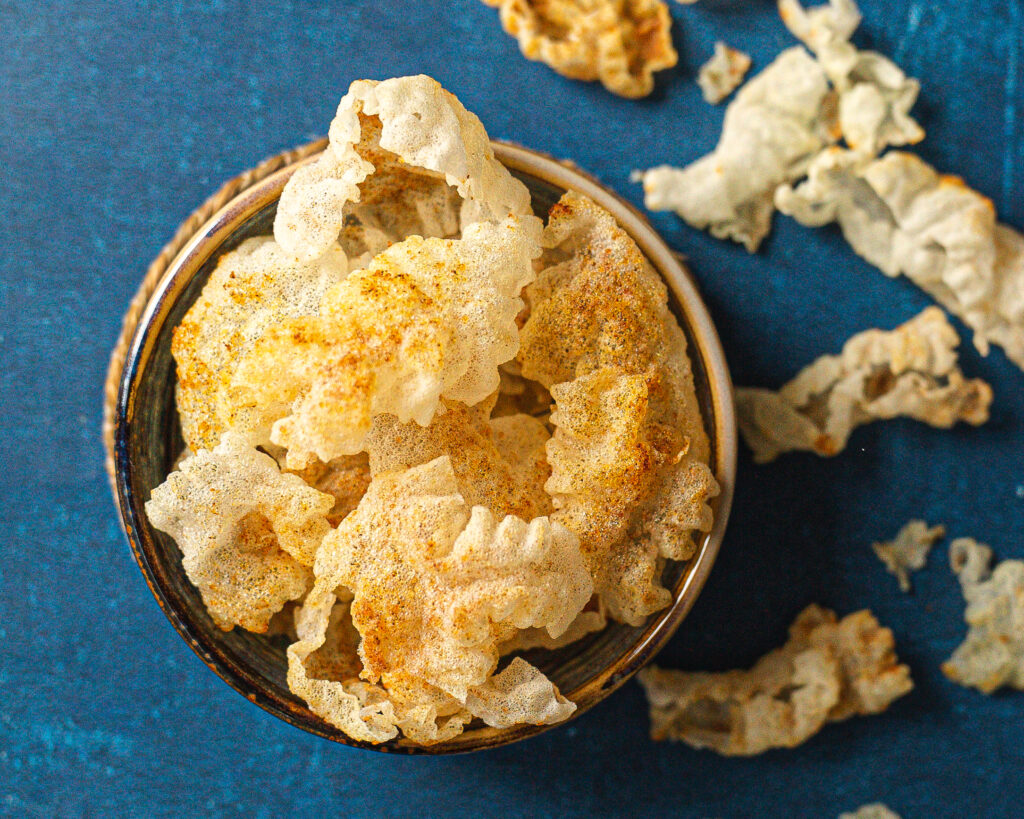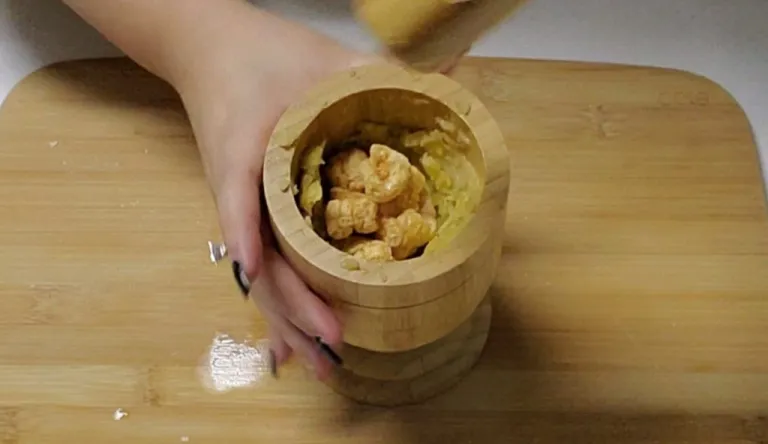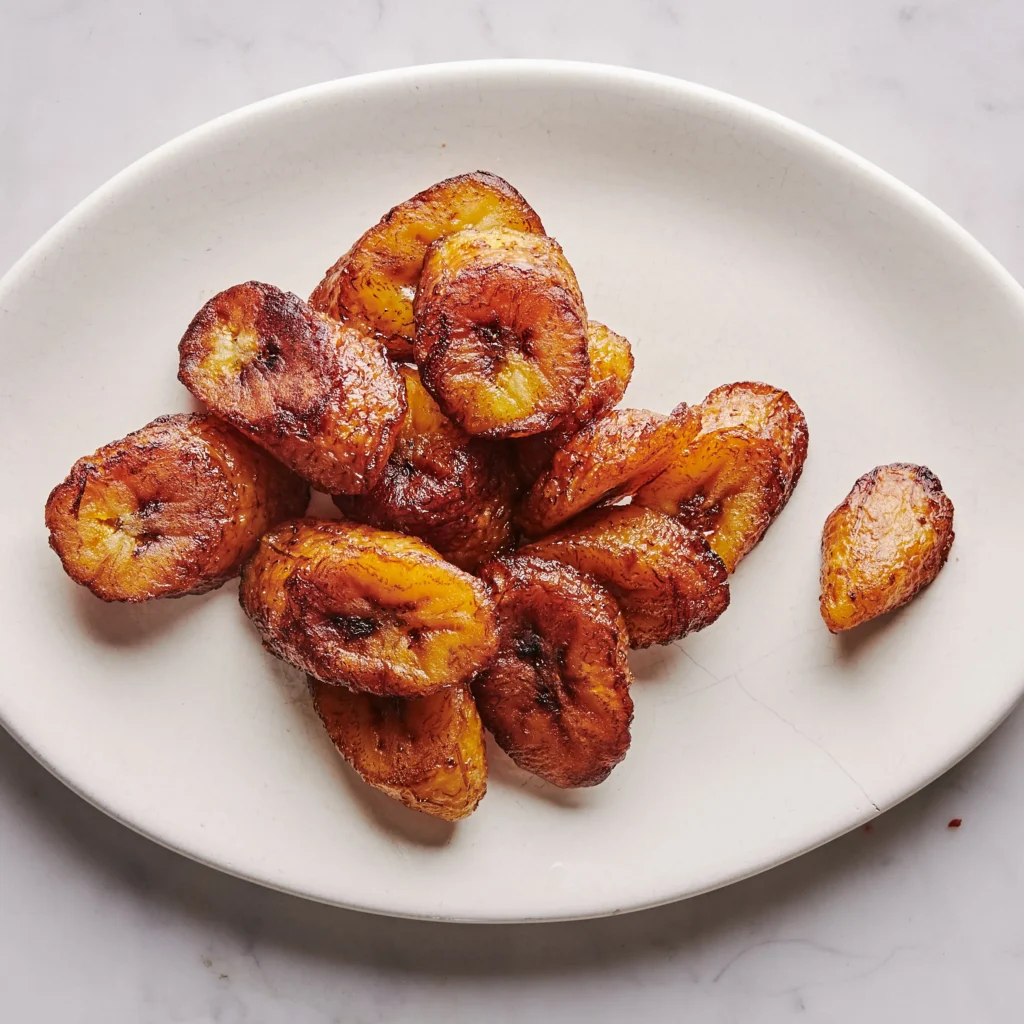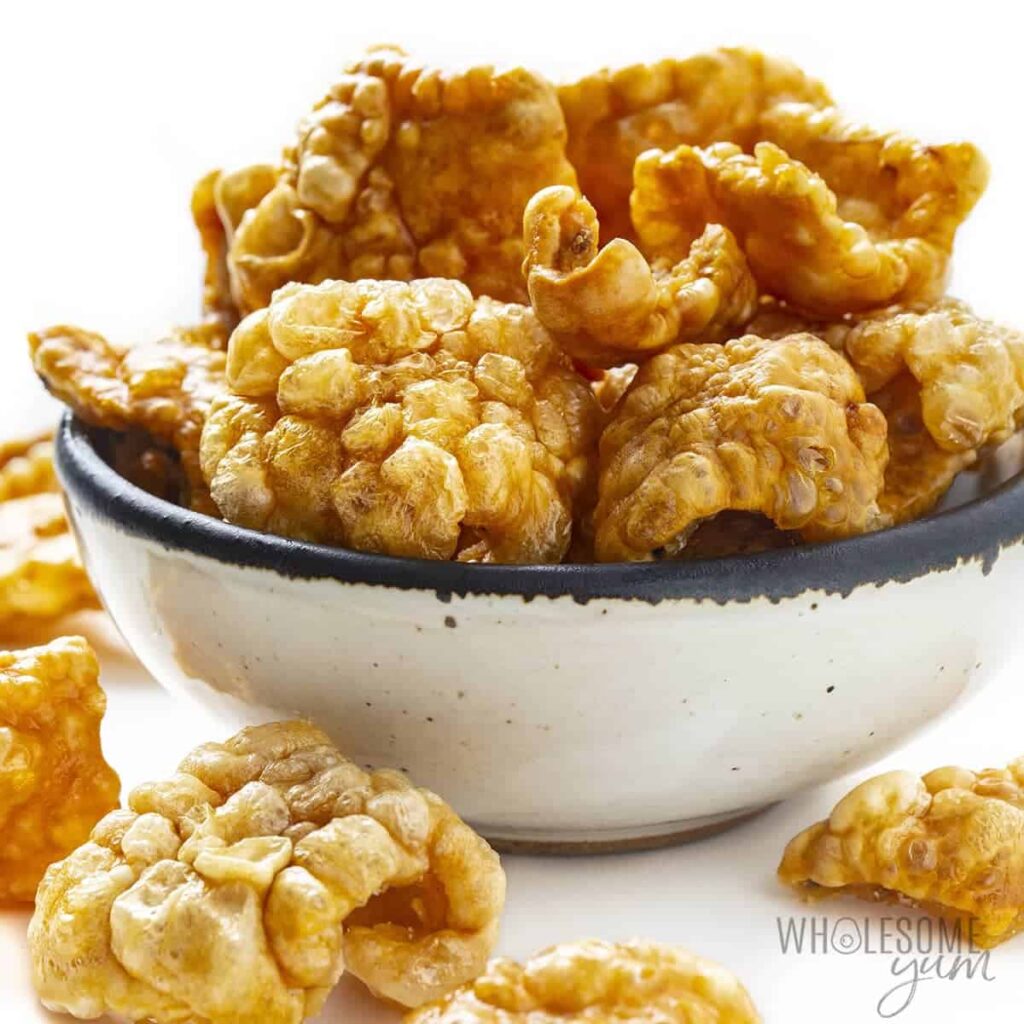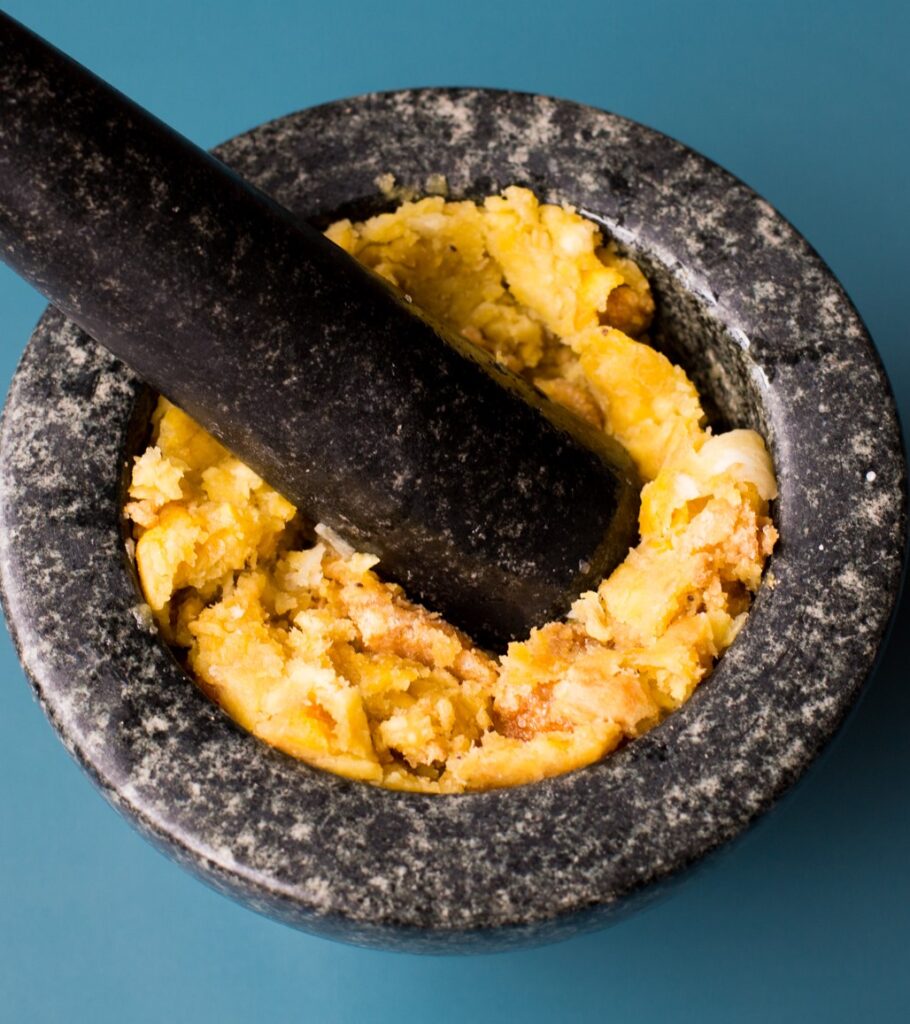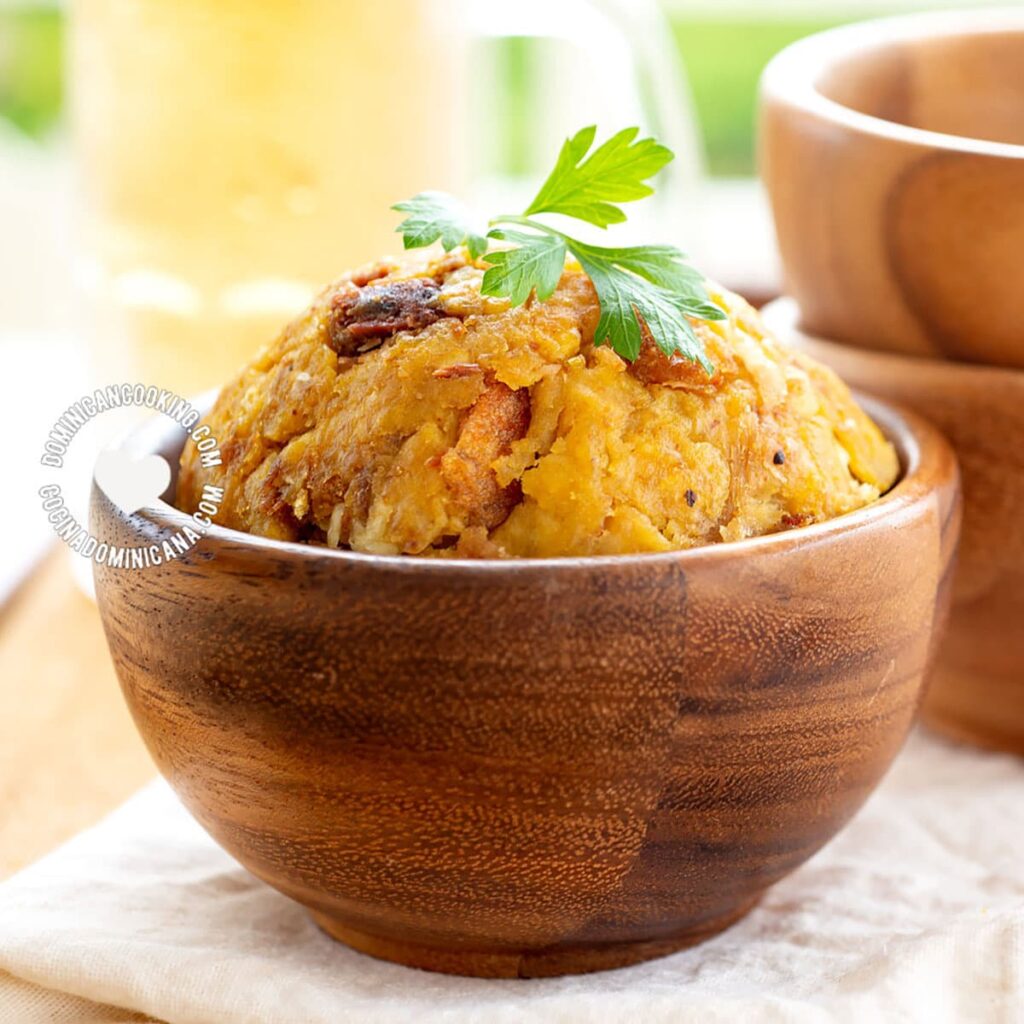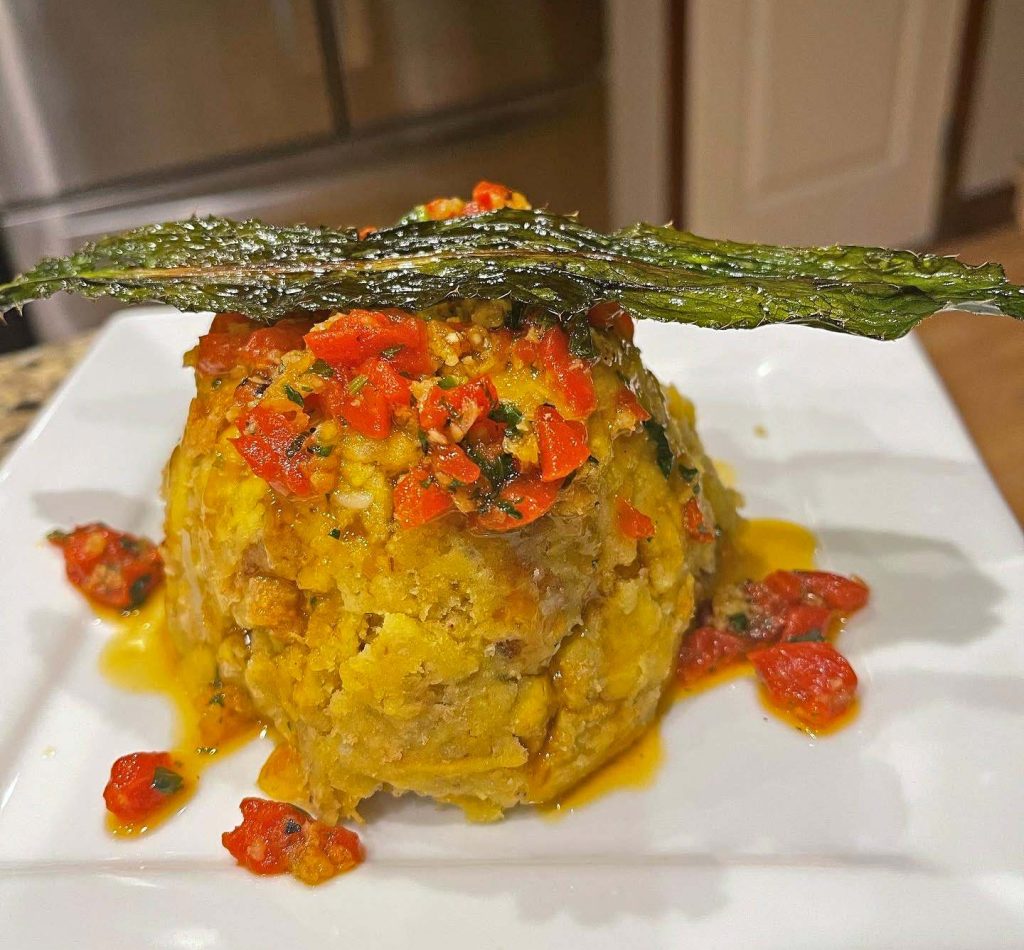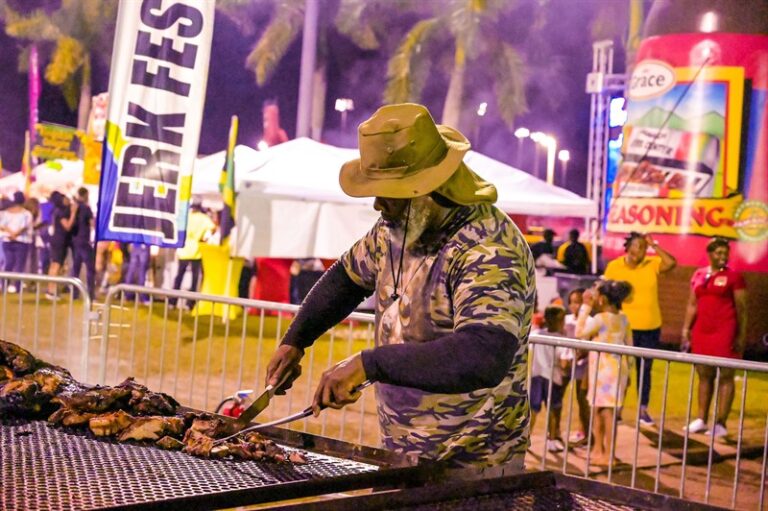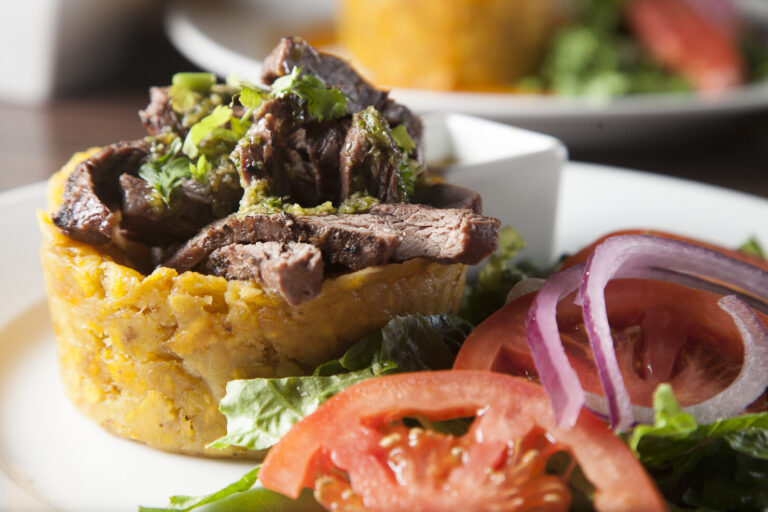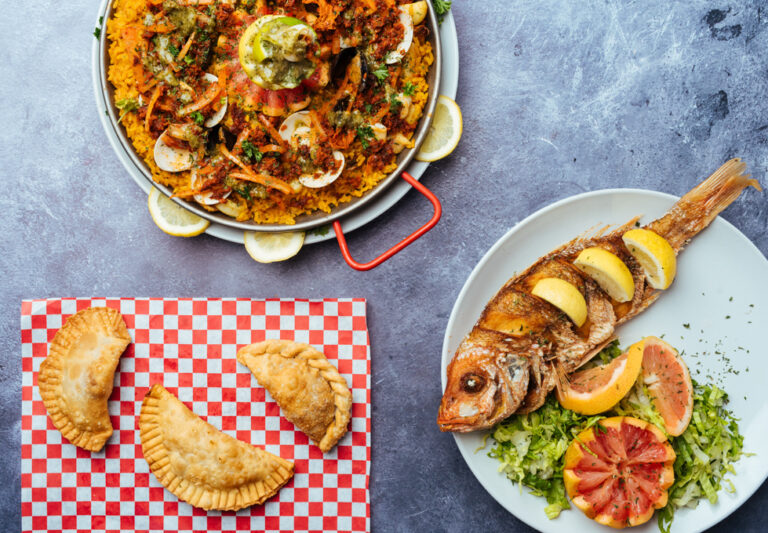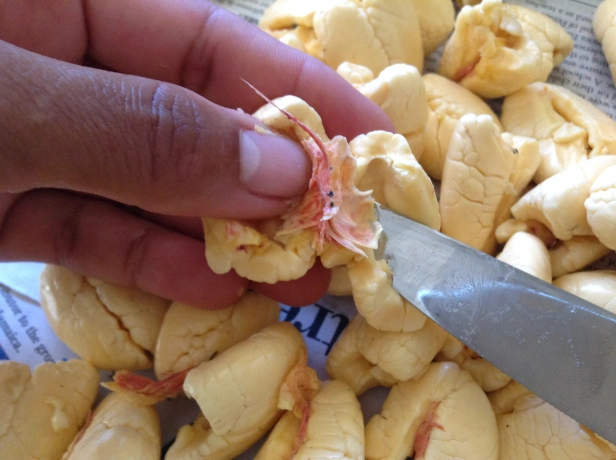Arroz con Gandules y Mofongo is more than just a meal; it’s a celebration of culture on a plate. This classic dish, with its roots deeply embedded in the culinary traditions of Puerto Rico, brings together the hearty goodness of rice and pigeon peas with the unique texture of mashed plantains. Each bite is a testament to the island’s history, a blend of indigenous Taino, Spanish, and African influences that have shaped its food scene.
The dish starts with Arroz con Gandules, where rice meets the earthy tones of pigeon peas, cooked to perfection with a blend of sofrito, a rich sauce made from tomatoes, peppers, onions, garlic, and herbs. Then comes the Mofongo, a mash-up of fried plantains, garlic, and pork rinds, all pounded together to create a savory, garlicky mound that complements the rice beautifully.
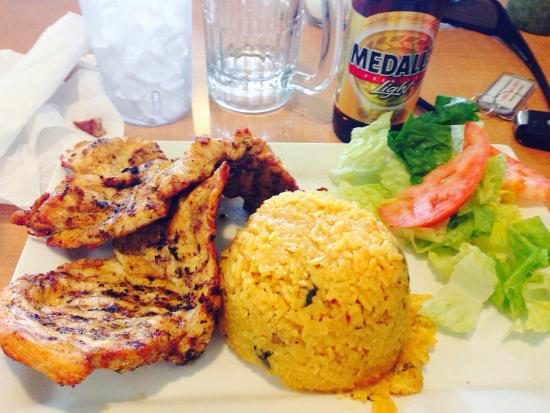
Whether you’re new to these flavors or they’ve been part of your family’s table for generations, this article will guide you through the joys of making Arroz con Gandules y Mofongo. From its storied past to the simple joy it brings to today’s kitchens, we’ll cover everything you need to know to bring this dish to life.
The Roots of the Dish Arroz con gandules y mofongo
Arroz con Gandules y Mofongo is a dish that tells a story, a narrative woven through generations and across oceans. It’s a tale of convergence, where the indigenous Taino, the Spanish conquistadors, and African traditions meet. This section delves into the historical and cultural journey of this beloved dish.
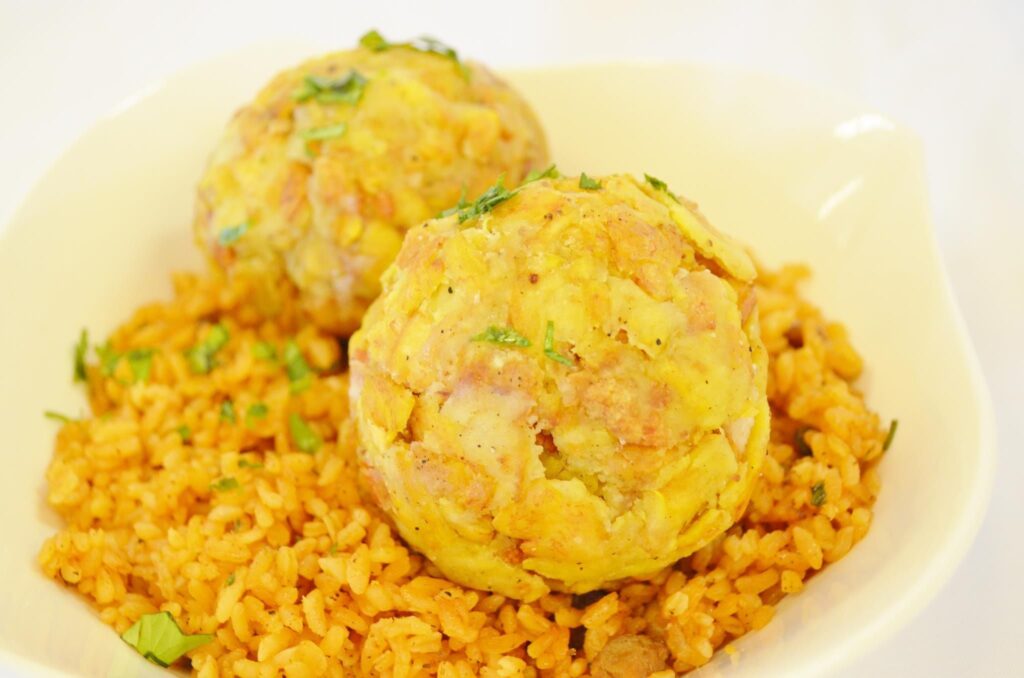
Historical Background
The story of Arroz con Gandules begins in the fertile valleys of Puerto Rico, where the Taino people cultivated rice and pigeon peas. These staple crops were not just a source of sustenance but also a part of their cultural identity. With the arrival of the Spanish, the culinary landscape began to change. The Spaniards introduced new ingredients and cooking methods, which, combined with the Taino’s techniques, gave birth to what we now know as Arroz con Gandules.
Geographic Origins
Puerto Rico, an island rich in history and culture, is the birthplace of this iconic dish. The tropical climate and fertile land make it ideal for growing the key ingredients. Over time, Arroz con Gandules became synonymous with Puerto Rican cuisine, embodying the island’s spirit and its people’s zest for life.
Cultural Significance
Arroz con Gandules y Mofongo isn’t just food; it’s a symbol of Puerto Rican pride. It’s often served during festivals, family gatherings, and significant events, representing unity and tradition. Each ingredient carries a story, each method a lineage, making the dish a vibrant tapestry of the island’s history.
Arroz con Gandules: The Grain that Binds
Arroz con gandules, or rice with pigeon peas, is the heart of Puerto Rican cuisine. It’s a dish that brings families together and is often at the center of celebrations. In this section, we’ll walk through the ingredients and steps involved in making this flavorful dish.
Key Ingredients and Their Roles
The foundation of Arroz con Gandules is, of course, rice and pigeon peas. The rice absorbs flavors from the other ingredients, becoming more than just a side dish—it’s the main event. Pigeon peas, with their nutty taste and firm texture, add depth and substance. Together, they create a satisfying meal that’s both filling and flavorful.
Sofrito: The Flavor Enhancer
Sofrito is a blend of onions, bell peppers, cilantro, garlic, and tomatoes, finely chopped and sautéed in oil. This mixture is the soul of the dish, infusing it with a rich, aromatic flavor that is unmistakably Caribbean.
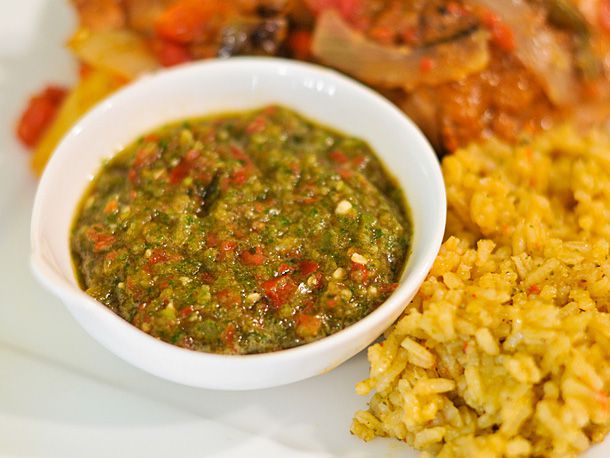

Achiote Oil: For Color and Taste
Achiote oil, made by simmering annatto seeds in oil, imparts a distinctive red-orange hue to the dish and a slightly peppery taste.
It’s not just about looks; achiote adds its own subtle layer of flavor.
Step-by-Step Cooking Process
Creating Arroz con Gandules is an art that requires patience and attention to detail. Here’s how to make it:
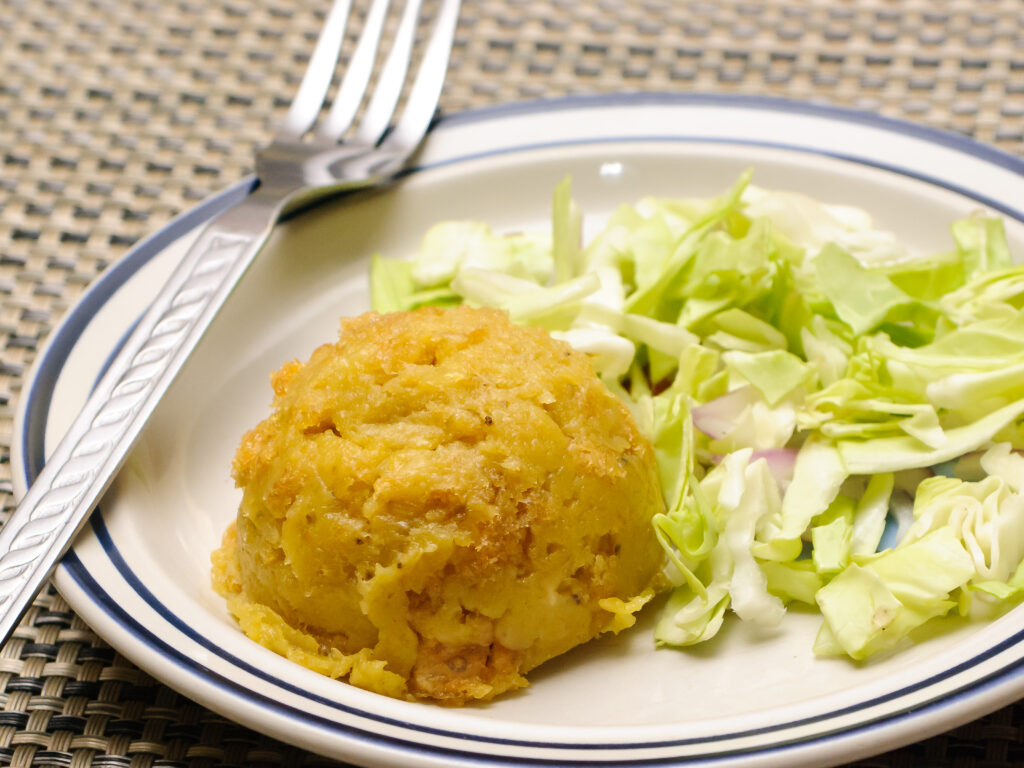
- Prepare the Sofrito: Start by making the sofrito. Combine the onions, bell peppers, cilantro, garlic, and tomatoes in a food processor and pulse until finely chopped.
- Cook the Sofrito: Heat some oil in a large pot over medium heat. Add the sofrito and cook until the vegetables are soft and the mixture is fragrant.
- Add the Rice and Pigeon Peas: Add the rice and pigeon peas to the pot. Stir well to ensure the grains are coated with the sofrito.
- Season the Dish: Add salt, pepper, and any other desired seasonings. This is also when you’ll stir in the achiote oil for that beautiful colour.
- Simmer the Rice: Pour in water or broth until it covers the rice by about an inch. Bring to a boil, then reduce the heat to low. Cover and let it simmer until the rice is tender and the liquid is absorbed.
- Let it Rest: Once the rice is cooked, turn off the heat and let it sit, covered, for a few minutes. This allows the flavours to meld and the rice to settle.
- Fluff and Serve: Fluff the rice with a fork to separate the grains and serve hot.
Mofongo: A Mashed Marvel
Mofongo, a beloved component of Puerto Rican cuisine, is a dish with African roots that has become a staple in Caribbean cooking. This section will guide you through the process of making Mofongo, ensuring that each step is clear and easy to understand.
Origins of Mofongo
Mofongo’s journey began with the African slaves brought to the Caribbean, who introduced the technique of mashing starchy foods. In Puerto Rico, this technique was applied to the plentiful plantains, creating a dish that has endured through the centuries.
Ingredients and Preparation Method
The key to Mofongo’s unique flavor and texture lies in its simple ingredients and the traditional method of preparation.
The Plantains: The Star of the Show
Green plantains are the foundation of Mofongo. They are peeled, sliced, and fried until they are just tender – not too crisp, to maintain the right texture for mashing.
Garlic and Pork Rinds: Flavor Boosters
Garlic is crushed and mixed with the plantains to give Mofongo its characteristic garlicky taste. Pork rinds, or chicharrón, are added for a salty crunch, enhancing the overall flavor profile.
The Mashing: Bringing It All Together
Once the plantains are fried, they are transferred to a mortar (pilón), where they are mashed with the garlic and pork rinds. The mixture is worked until it forms a cohesive, yet slightly chunky, mass.
Step-by-Step Cooking Process
Here’s how to make Mofongo, step by step:
- Fry the Plantains: Cut the plantains into thick slices and fry them in oil until they are soft but not browned.
- Prepare the Garlic and Pork Rinds: While the plantains are frying, crush the garlic and chop the pork rinds into small pieces.
- Mash the Ingredients: Transfer the fried plantains to a mortar along with the garlic and pork rinds. Mash them together until they form a consistent mixture with some texture remaining.
- Shape and Serve: Once mashed, shape the Mofongo into individual servings. It can be formed into balls or served in the mortar itself.
- Garnish and Enjoy: Garnish with extra pork rinds or a drizzle of olive oil, and serve immediately while it’s still warm.
Nutritional Information and Health Benefits
Understanding the nutritional content and health benefits of Arroz con Gandules y Mofongo is essential for appreciating this dish beyond its flavors. This section provides a detailed breakdown of the nutritional aspects and the health advantages they offer.
Arroz con Gandules is a wholesome dish that combines complex carbohydrates from rice with protein and fiber from pigeon peas. Here’s what each serving typically contains:
- Calories: A balanced source of energy.
- Proteins: Essential for muscle repair and growth.
- Fiber: Aids in digestion and promotes a feeling of fullness.
- Vitamins: Such as vitamin C from tomatoes in sofrito, which supports the immune system.
- Minerals: Including iron and potassium, which are crucial for blood health and regulating body fluids.
Health Benefits of Mofongo
Mofongo’s main ingredient, plantains, is a powerhouse of nutrients:
- Complex Carbohydrates: Provide sustained energy throughout the day.
- Vitamin A: Important for vision and immune function.
- Vitamin C: Helps in the absorption of iron and maintains healthy skin.
- Fiber: Again, it aids in digestion and can help control blood sugar levels.
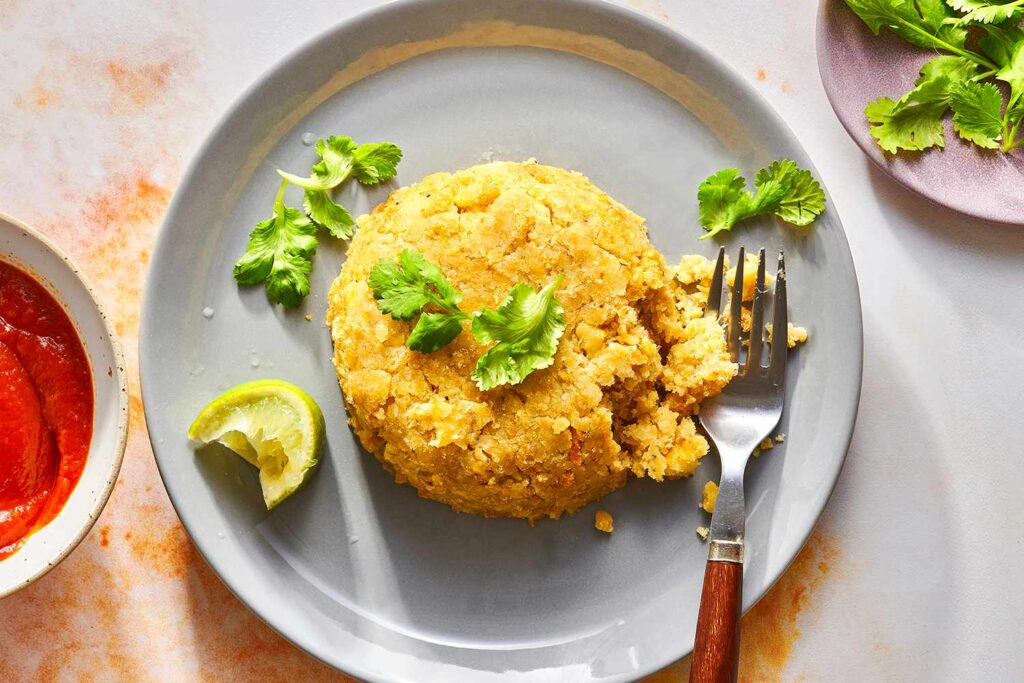
Dietary Considerations
While Arroz con Gandules y Mofongo is nutritious, it’s also important to consider dietary needs:
- Gluten-Free: Naturally free from gluten, making it suitable for those with gluten intolerance.
- Vegetarian Options: Can be made vegetarian by omitting pork rinds in Mofongo and using vegetable broth.
- Calorie-Dense: Those watching their calorie intake may want to enjoy this dish in moderation.
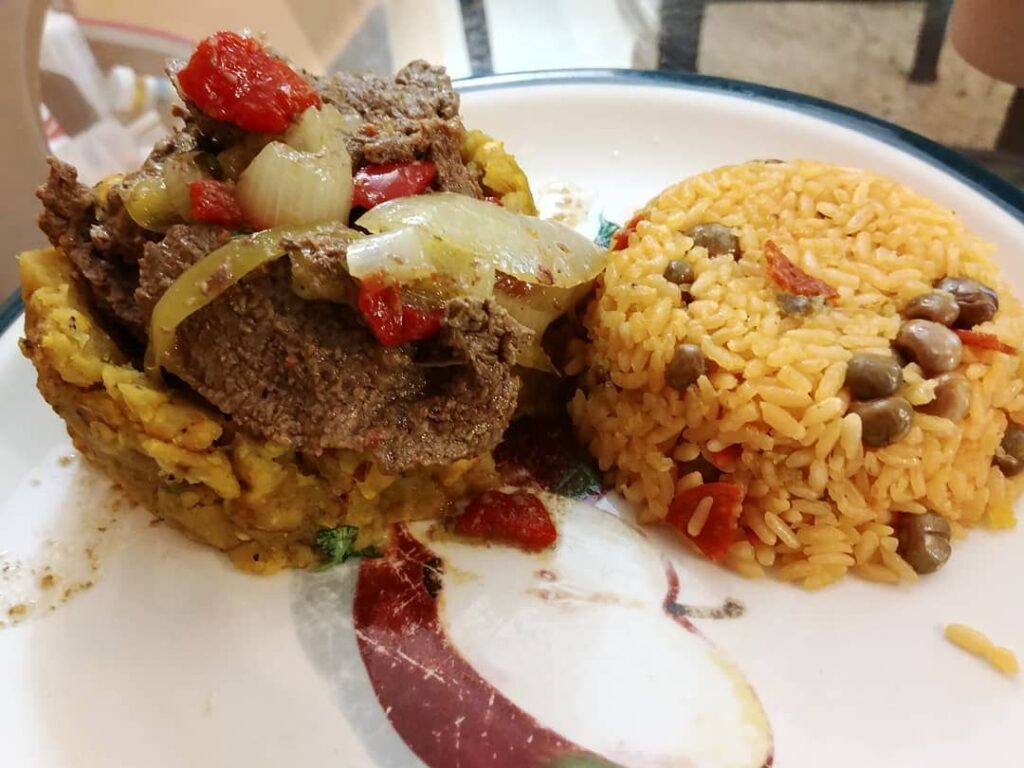
Final Thoughts
Arroz con Gandules y Mofongo is more than just a combination of rice, pigeon peas, and mashed plantains. It’s a culinary expression of Puerto Rico’s rich heritage, a dish that carries the legacy of its people and the warmth of its kitchens.
Whether served at a family gathering or enjoyed as a comforting meal, it brings a taste of the Caribbean to any table. May this dish inspire you to explore new flavors, embrace cultural traditions, and, most importantly, enjoy the process of creating and sharing food.
Jl.Surjan
Disclosure: Our blog contains affiliate links to products. We may receive a commission for purchases made through these links. However, this does not impact our reviews and comparisons. We try our best to keep things fair and balanced, in order to help you make the best choice for you.
